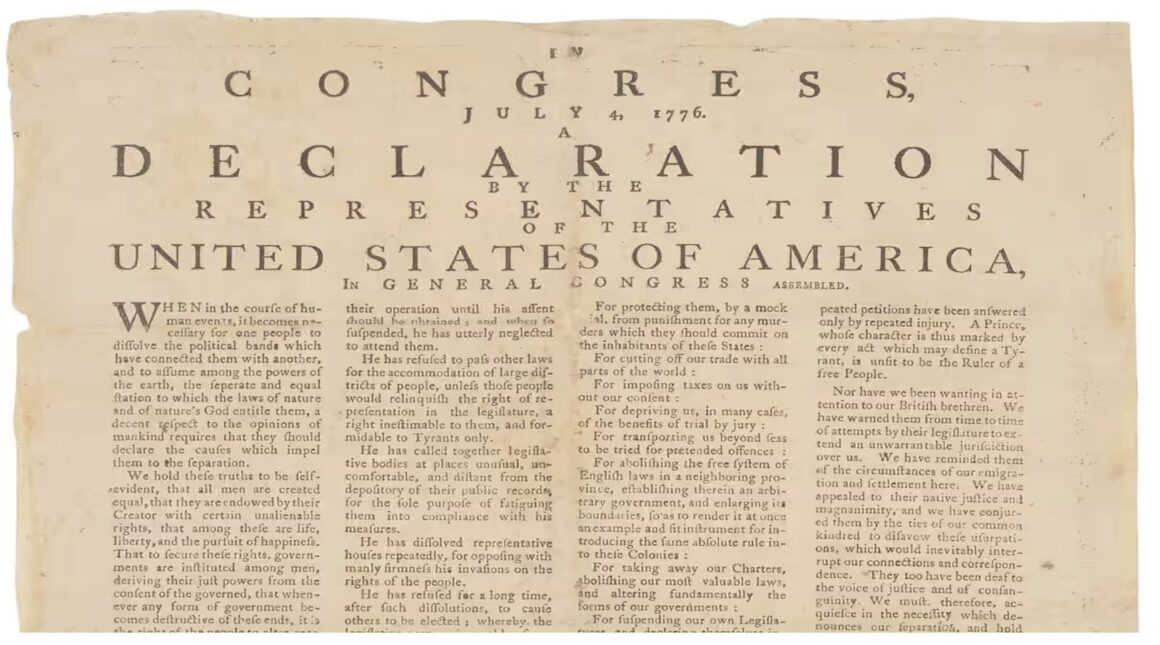Table of Contents
Declaration of Independence APUSH Definition
Understanding the APUSH Exam
The Advanced Placement United States History exam, or APUSH for short, is an educational opportunity offered by The College Board. This rigorous test gives high school students the chance to earn college credits while still in high school.
APUSH takes a close, in-depth look at the history of the United States. From the discovery of America to today’s complex political landscape. The exam heavily emphasizes understanding the causes and impacts of major events. This is where the Declaration of Independence comes into play.
The Significance of the Declaration of Independence
When discussing the Declaration of Independence in an APUSH context, it’s viewed as more than just America’s birth certificate. It becomes a symbol and manifestation of revolution, a beacon of self-governance, and a ‘break-up letter’ with Britain.
Thomas Jefferson, the primary framer of the declaration, used this document to outline the injustices Americans suffered under British rule, highlighting the lack of representation and unfair taxes. Acting as a catalyst for revolutionary thoughts, Jefferson’s ideas resonated with colonists who felt oppressed by the monarchy. This revolutionary sentiment is a central theme in APUSH, demonstrating how discourse can lead to actions that permanently alter the course of history.
Last but not least, the Declaration of Independence embodies America’s fundamental ideals of freedom and equality, principles that continue to shape its political landscape. Thus, when studying for the APUSH exam, it’s important to understand the document’s foundational role in shaping U.S. history.

Key Elements of the Declaration of Independence
Delving deeper into the Declaration of Independence, it’s essential to understand the key components that define its significance. This monumental document is divided into four main parts, each bearing equal importance in establishing the aspirational vision for a nation built on free will and equality.
Preamble: “We hold these truths to be self-evident…”
The preamble of the Declaration of Independence is its most iconic section. Beginning with the famous phrase, “We hold these truths to be self-evident,” the preamble sets the tone for the bold assertions that follow. Its power lies in its proclamation of universal values, the belief that all humans are created equal and entitled to “Life, Liberty, and the pursuit of Happiness.” These words, penned by Thomas Jefferson, are a resonating statement echoing the moral and political conviction of the colonies.
Natural Rights and the Philosophy of John Locke
The concept of natural rights is another vital component of the Declaration. Based on the ideas of Enlightenment philosopher John Locke, it postulates that humans are born with inherent rights – life, liberty, and property, which a government cannot seize. Jefferson slightly modified this theory in the Declaration, replacing ‘property’ with ‘the pursuit of happiness’.
Locke’s philosophy influenced the entire framing of the Declaration as it made a compelling case for the colonies’ rationale for independence. A government that fails to secure these basic rights or usurps them, according to Locke, is illegitimate and can be overthrown—a key point echoed in the Declaration.
Grievances against King George III
The third component of the Declaration is the list of grievances against King George III. It serves as a detailed indictment of the King’s wrongdoings and his failure to respect the rights and freedom of the colonists. The document accuses King George III of over 25 offenses, including imposing taxes without consent, disbanding colonial legislatures, and maintaining a standing army in peacetime. Not a laundry list, but a calculated argument intended to justify the colonists’ decision to declare independence.
Assertion of Independence and Dissolving Political Connections
The final part of the Declaration holds the actual declaration of independence. Having laid out the philosophy and grievances, the colonists, through this part, formally sever all political ties with Great Britain. By declaring themselves absolved from all allegiance to the British Crown, the colonies essentially present themselves as thirteen independent states. They then assert their right to levy war, form alliances, and do all other acts that independent nations may rightfully do.
The Declaration of Independence stands as a pivotal document in American history and the APUSH exam. It’s the embodiment of the colonists’ growing discontent with oppressive British rule and their aspiration for a nation built on liberty and equality. The economic, political, and societal factors that led to its creation paint a vivid picture of the American Revolution’s depth. Its key elements, from the preamble’s universal values to the list of grievances against King George III, highlight the depth of the colonists’ desire for independence. Understanding the Declaration of Independence’s significance and its role in shaping America is crucial for APUSH students. It’s more than a historical document; it’s the birth certificate of a nation built on free will and equality.





